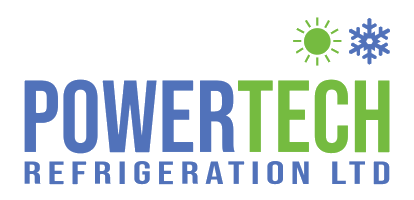In 2022 Powertech Refrigeration completed the installation of a Cold Store, Chill Store, High Care Production Area and Packaging Room with temperatures ranging from -20°C to +8°C. This state-of-the-art food production facility invested in expansion totalling 1480m2 comprising of new innovative high-speed production lines with additional building capacity for future growth. Powertech delivered a full design package using our in-house design team utilising BIM capabilities to effectively manage and collaborate with other contractors to avoid design clashes.
Utilising our close relationship with Fairhaven H&V Services Ltd, an air handling unit (AHU) system was designed and installed to create a food safe environment that provides positively pressurised production halls that prevent the ingress of airborne contaminants while providing climatised air in accordance with food safety standards, CIBSE and local legislation guidelines.
Due to washdown requirements within this factory, dual-discharge coolers were installed with full stainless-steel casings to protect against corrosion. These were added to the existing glycol refrigerant system with over 100m of pipework installed networking throughout the new facility.
The raw ingredient cold store is required to operate at -20°C, this demanded use of a more effective refrigerant than glycol. Ammonia has many benefits, one of which is that it is a natural refrigerant meaning its Global Warming Potential (GWP) is zero. This site has an existing ammonia refrigerant system with enough capacity to tie in and provide cooling along with hot gas defrost to the -20°C ingredient store. All works was done in accordance with PED directive and European Standard EN378.
Having installed a ventilation, glycol refrigerant and ammonia refrigerant systems we were able to compile the information and relay it from the devices and controllers into an intuitive data management technology called RDM. This front-end monitoring controller gives the customer a main point of access for all these systems whether it be for providing insights into the energy usage and efficiencies or for monitoring temperature control ensuring HACCP and food safety regulatory compliance.












